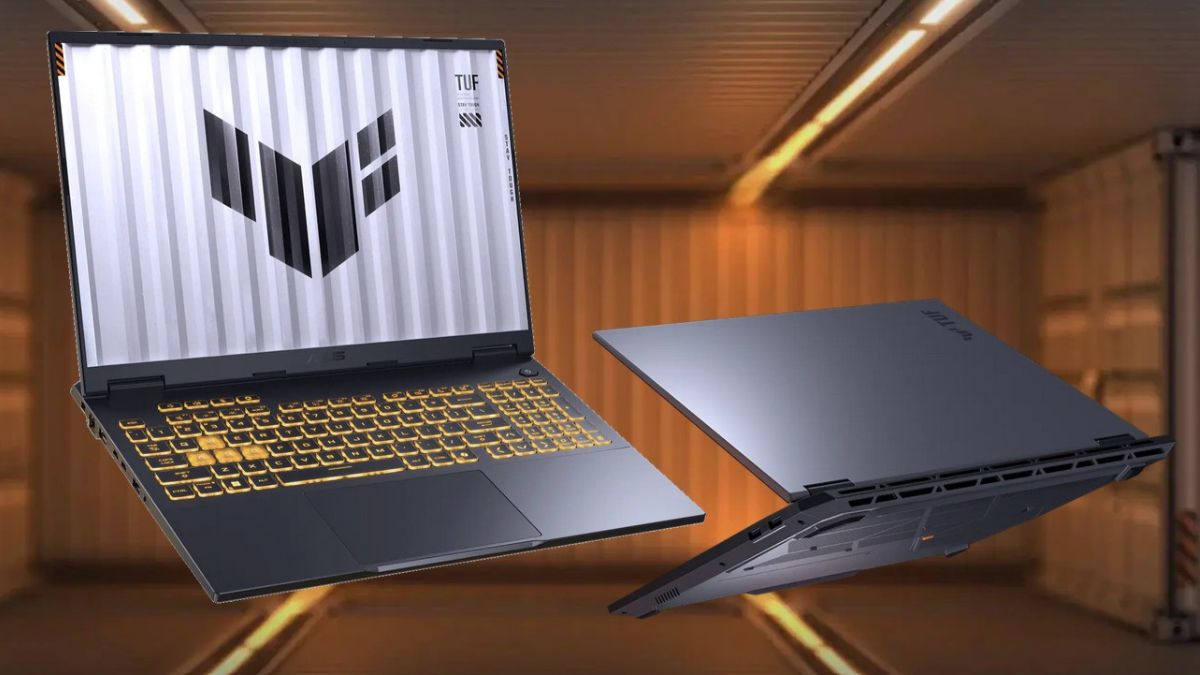ASUS TUF F16 review: Display, keys, and performance worthy of a starter gaming laptop
 ASUS TUF F16 gaming laptop
ASUS TUF F16 gaming laptop
Like ASUS’s ROG series of laptops, the TUF series is also aimed at the gaming audience but with a slightly lower price tag. The refreshed TUF 16 (2025) starts at a base price of ₹1,24,990 for the 14th-gen Intel i5 model. The higher-end model comes with a 14th-gen i7, which I have been using for a couple of weeks now. Let’s see how well it does for your gaming and other needs:
The TUF F16 is, like most other gaming laptops you would have seen from ASUS, built like a tank in mind. The lid is made from aluminium, while the hinge, which rotates 180 degrees, appears sturdy and well-made, along with an extended back chin that also houses LEDs indicating battery, connectivity, and processing.
The right side features two USB 3.2 gen 2 type A ports; and the left side houses the slim jack rectangle power port, gigabit LAN port, one HDMI 2.1 port, one thunderbolt enabled type C port with DisplayPort 2.1 support alongside another USB type C port with DisplayPort 2.1 and power delivery support, another USB 3.2 port and the 3.5mm audio jack.
You get vents at the back and the extended rear chin for some extra airflow. This MIL-STD-810H-certified laptop meets almost all your connectivity needs, given its dimensions, which measure approximately 18mm at its thinnest point and weigh 2.2kg.
Featuring a 16-inch 2.5k (2560x1600) LCD (IPS) display at a 16:10 aspect ratio that supports up to 165Hz refresh rates. The display is quite bright and seems like one of the better parts about the laptop, which is nice to see for something meant for gaming. You also get a MUX switch for switching between the two GPUs as and when more bandwidth is needed or not. Details on the display come out well with decent colour reproduction to go with it (default mode).
The backlit keyboard features a number pad, highlighted W, A, S, and D keys for gaming, and all the keys are well-spaced with decent travel. The only issue—nothing major—I noticed was that the keyboard had a slightly hollow feel when used for typing quickly. Perhaps the inside of the body is supposed to be that way, but it just felt a little unusual. However, the keyboard itself is comfortable to type on. The extra spacious touchpad is also not bad; it is responsive to your taps and usual Windows gestures. The dual speakers are quite loud and have sufficient depth to play games and videos indoors on a laptop.
Powered by a 14th gen Intel i7 14650HX (up to 2.2 GHz 16 cores) chip with Intel UHD graphics and nVidia’s GeForce RTX 5070 GPU (with 8GB vGDDR7 RAM), along with 32GB DDR5 RAM and 1TB NVMe m.2 SSD, this machine runs on Windows 11 Home 22H2 version.
The laptop was really responsive and smooth in day-to-day tasks, opening quickly from standby to resume work, while running multiple Web browsers with several applications playing in the background and some Word documents open alongside. You can use Armoury Crate to customise keyboard input, OS themes, power modes, and more.
For gaming, you can expect to play a game like The Last of Us 2 at 65 frames per second and higher, with DLSS enabled, or GTA V at recommended settings, which shows around 100 frames per second. It can get a bit heated, which isn’t surprising. Despite plenty of airflow and vents, playing a heavy game like Valorant for over an hour will make the machine quite a bit heated up, but that comes with pretty much any gaming laptop.
With its 90Wh battery, I didn’t see it lasting over 3.5 hours, even on the default mode, and even less when used for high-end gaming. The bundled 280-Watt charger can charge it and is used for the extreme gaming mode, which cannot be achieved when using a USB Type-C port that charges at 65 Watts. It supports charging up to 100 Watts over USB Type-C.
In conclusion, the TUF F16 is a well-rounded gaming laptop that can also handle your video editing needs, 3D work, or regular day-to-day tasks. While it doesn’t shine in the battery department (expectedly so), it boasts a nice display and keyboard combination, along with a rugged build and optimised, smooth software performance.
Gadgets Review